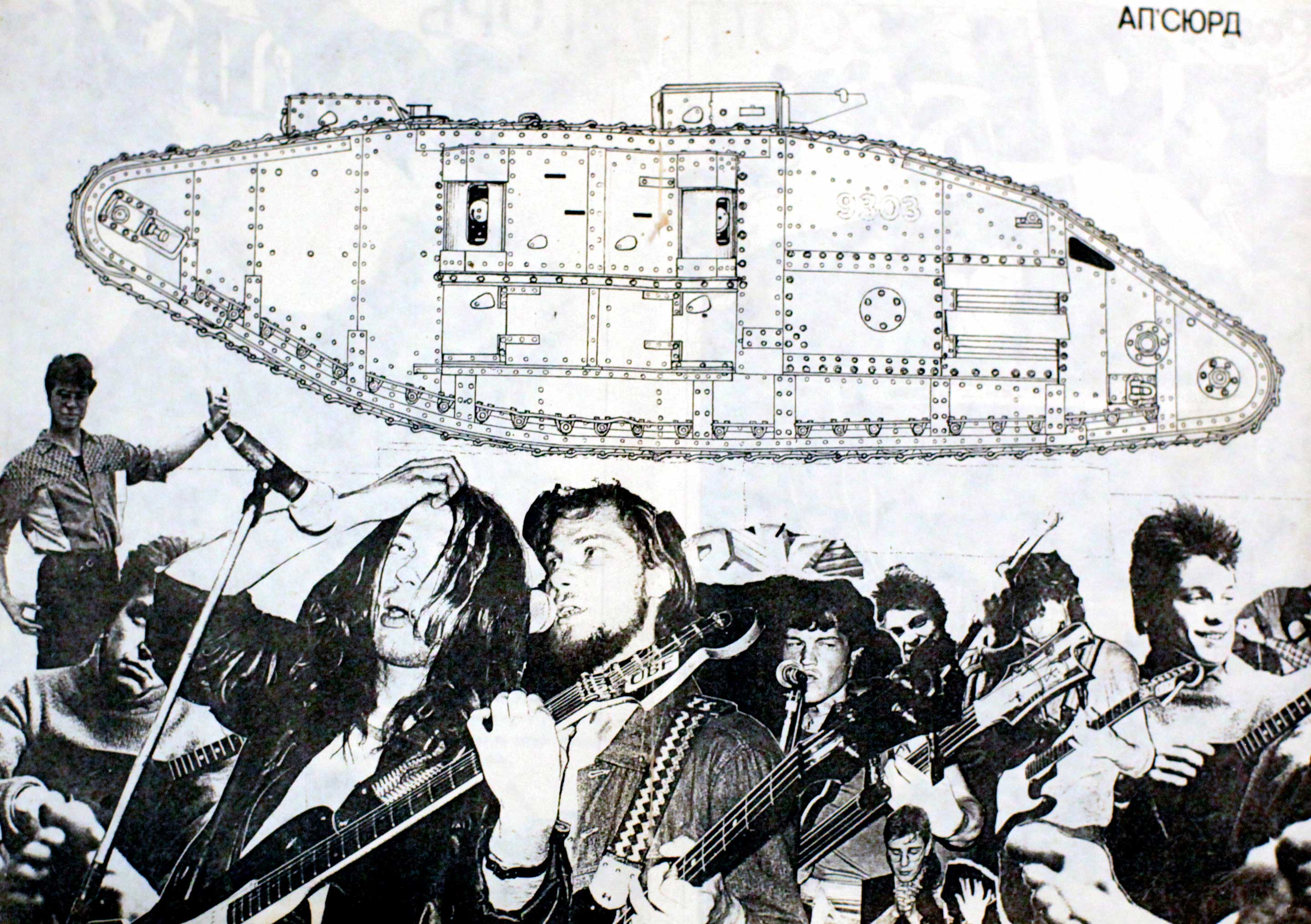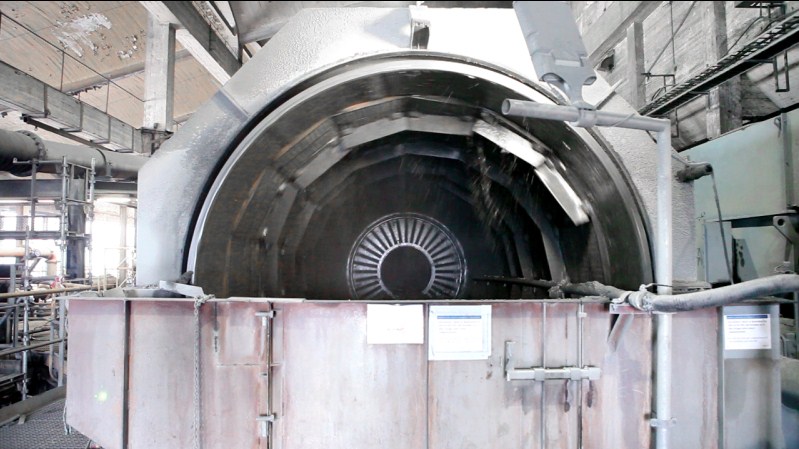Tanya Busse explores northern European geopolitics

Born in Moncton, but now based in Tromsø, Norway, Tanya Busse works primarily in video and installation. Busse explores questions of visibility in relation to deep-time, invisible architectures and larger systems of power. She holds an MA in Capitalism, Sustainability and Art from the Academy of Contemporary Art in Tromsø, and a BFA from the Nova Scotia College of Art and Design in Halifax. She has exhibited at the 31st Bienal de São Paulo (2014), Gallery 44: Centre for Contemporary Photography in Toronto (2013); Turku Biennial in Turku, Finland (2013); and is currently the co-director of Smalls Gallery (Tromsø) and Mondo Books, an independent book publishing platform that focuses mainly on works by artists from the arctic North.
Along with one of her frequent collaborators, Norwegian architect and artist Joar Nango, Busse will be speaking at the /edition Art Book Fair on the topic of underground publishing initiatives in Northern Europe, Sápmi and Russia, and how printed matter is being used to mobilize larger social transformations and create communities.
The following conversation was conducted by Skype earlier in October.
Xenia Benivolski (XB): I was looking at your project, Hollow Earth (2013), recently and was wondering if you could tell me a bit about it?
Tanya Busse (TB): Hollow Earth is a collaboration between myself and Emilija Skarnulyte. Our collaboration started out as way to observe the northern landscape and the changes there due to industrial development and mining. We incorporate everything from sculpture, publications, installations and also video, trying to present multiple points of view regarding our current conditions on earth. Up until this point, our focus has been on the circumpolar region, where we both live, but recently we’ve widened the scope to include other areas that are also being confronted with the politics of land-use and the exploitation of natural resources, such as Dead Sea Works in the Negev Desert and the American Salt Flats.
XB: But, this is not what you’re presenting in Toronto.
TB: No, at the book fair, I’m presenting a book platform or book-related initiative I’m part of called Mondo. It’s run by myself, Miriam Haile and Linn Horntvedt. Mondo started as a very loose framework and it still is quite free. We mostly gather self published books made by younger emerging artists and cultural producers. We also host events, readings and performances, and make sculptural installations as well as official bookshops. Since 2015, our project has been temporarily situated in Tromsø Kunstforening (Tromsø Gallery of Contemporary Art) and has a satellite site at Nord Norsk Kunstnersenter in Svolvær.

I’ll also be giving a presentation with Joar Nango called Notes From the Edge of a Cloud, a nomadic library that brings together informal publications and texts created in the Barents Region, which includes Norway and Russia. We’ll try to discuss how printed matter has been used politically to mobilize larger social transformations and create communities in our region.
XB: When I was first looking at your project I was interested in in how you deal with taxonomy and the historical layers of human presence. I’m wondering if you talk more about the body as that site.
TB: I’m interested in the nature and extent of human interaction with the earth’s surface – that includes scars, punctures, and perforations, the holes that will be left. With previous projects, the perspective was one of a bird’s eye view, or an alien’s view), looking down on the surface as an observing eye. But, more recently, the body as that site has also come up, from the desire to explore our senses in relation to matter. So, for example, with Hollow Earth, we are now trying to work with themes of body mining, how our bodies are actually prospecting tools to absorb salts and minerals, pleasure and desire. To approach things more subjectively and personally, and engage intimately with matter.
XB: Or, how are you might be a part of that matter?
TB: Yes, I guess it’s the big theme of our time – the realization that the lines between inside (us) and outside (matter) are very blurred. There is a lot of interesting work being done around this, and so we’ve tried to form a loose group or organism called the New Mineral Collective. It includes activists, philosophers and people interested in geopolitics and the shady real of the mineral extractive industry. We’re trying to build a constellation of collaborators internationally.
XB: Is your publication project, the Nomadic Library, part of this?
TB: I think that both Mondo, and also the Nomadic Library project, are very much related to the microcosm of the North, and are tied to local ecologies and discourses. Of course, they also intersect with many more global flows and systems. For example, Joar has a series of zines called Sámi huksendáidda that explore Sámi architecture. We’ve incorporated Joar’s interests in nomadism and the politics of the North from an Indigenous perspective. These themes resonate very strongly in other regions, too.
XB: How did the Nomadic Library collaboration come together?
TB: Sámi huksendáidda is one of the very few publications around Sami architecture, which is not a very well-documented field. So, it came together through a combination of his background, and my interest in publications and printed matter through Mondo, as well as my own practice. Over time, we’ve been interested in underground publishing in the North, and how it meets larger cultural movements; for example, trying to see the North from the many different perspectives of its inhabitants and the histories that exist there.

For example, there is a small island outside Tromsø called Karlsøya. It’s an interesting place as there had been waves of people moving there in a sort of utopian search for self-sufficiency. In the 1970s, they established something called Rainbow Press. They had their own publications, which were called Vannbæreren, and so we’ve been working with this 15-volume magazine series from the 70s. They’re quite esoteric and psychedelic publications . But, as well, it’s totally dealing with signs of those times, like feminism, self-effluence, new forms of energy, etc. So, what we also hope to do with this project is to do some republishing in the form of a new issue, working collaboratively with the people who initiated it; just one issue imitating the same format but updated it in a way, thinking about how relevant those old publications are now. It’s amazing how many things are still being discussed.
We’re trying to present different histories through publications in the North. There is one publication that came out of Indigenous riots and uprisings in the late 70s in a place called Alta. Some of the formation of the Sami parliament came out of that event. We are working with one publication that was distributed in that time called Charta 79, a reference to Czechoslovakia’s Charter 77. So, we’re also presenting things in the North from an Indigenous perspective and pushing against the colonial history of Norway.
XB: It seems like you have a really interesting, almost spatial, understanding of publication history in the North and that you orient yourself around these publications and these authors. There’s a flattening of history in this willingness to republish things and to pick up where things have left off. Do you have any thoughts how this practice had developed?
TB: My work often comes out of other work or other research. When we were in residency at AIR BARENTS in Arkhangelske, we were lucky because we had a lot of support and some very knowledgeable people working with us. There we had mostly recovered punk rock publications, so we were trying to see what underground publishing initiatives existed around there, in particular around Solovki Island, where many prisoners were members of the intelligentsia, or dissidents of Tsarist and revolutionary period Russia. They had their own printing press, so a lot of printed matter came out of that time. So, this is something else we’re working on.
XB: You’re from Canada originally. Is there room for comparison between the Norwegian North and the Canadian North?
TB: Yes, absolutely. I haven’t been to the Canadian North, but I feel it’s very much a space that fills the collective imagination of most urban Canadians, that they just mostly project into. But, maybe it’s best to come to our presentation at /edition. We hope to meet people from a Canadian context. Certainly there are similar discussions, Cold War tropes, Indigenous resettlement projects and climate research taking place in both locations.
Tanya Busse and Joar Nango’s presentation Notes from the Edge of a Cloud takes place on Saturday, Oct. 29 at 2:00 p.m. at the /edition Art Book Fair at the Metro Toronto Convention Centre. Joar Nango’s exhibition, Folding Forced Utopias, for you, is on view at Gallery 44 in Toronto until December 4, 2016.
Xenia Benivolski is a writer and curator currently based in Toronto, where she co-runs the 811 gallery and the NoYo AIR program.
book publishing Edition Art Book Fair Gallery 44 geopolitics Joar Nango Mondo Books natural resources Northern Europe Norway Tanya Busse underground publishing



